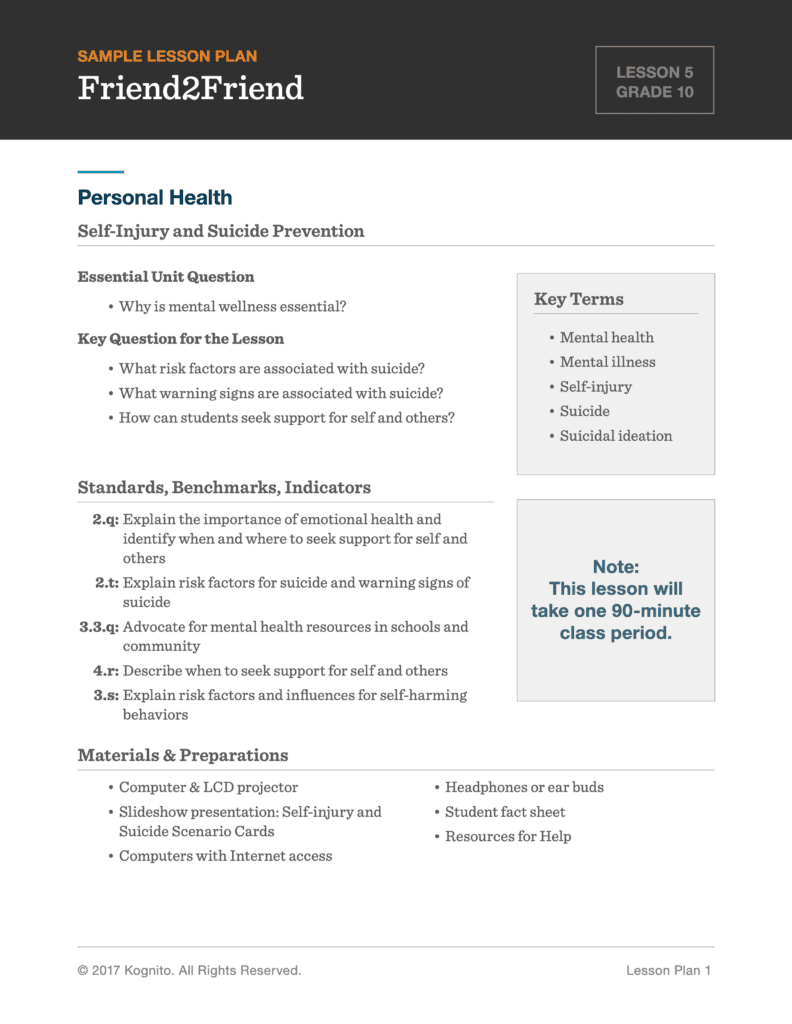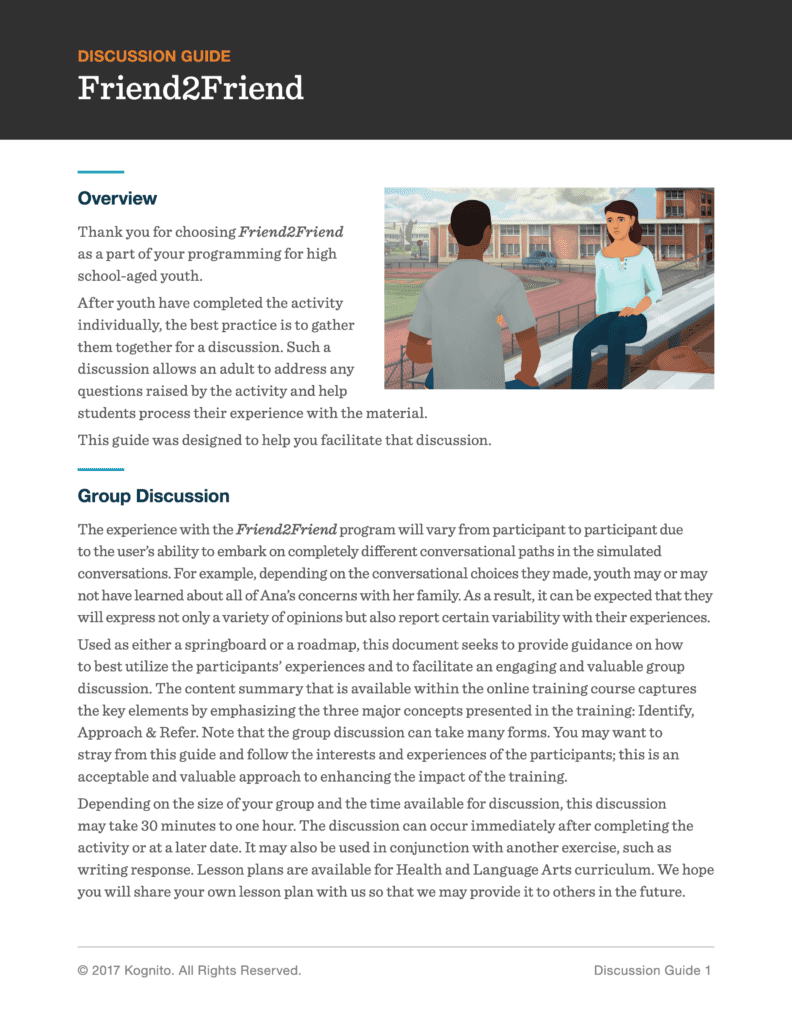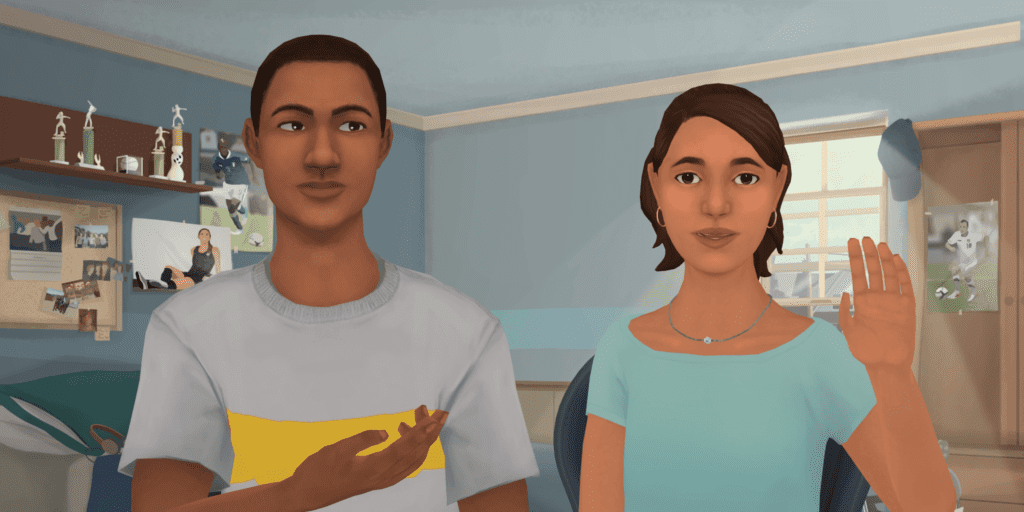Mental Health and SEL Curriculum for Middle & High Schools
COVID-19 has changed curriculum priorities in schools around the world. Many middle and high school teachers find themselves struggling to write lesson plans in what might be foreign territory to them, but a topic they know their students need—mental health. Here’s a look at why mental health and SEL curriculum is needed in today’s virtual, hybrid, or in-person classroom, and how educators can effectively and efficiently plan and prepare.
Student Mental Health & COVID-19
The COVID-19 pandemic is having a significant mental health impact on schools. Students are struggling with issues such as anxiety, loneliness, grief, trauma exposure, and depression. This not only affects students’ wellbeing, but can also negatively impact classroom behavior, school performance, and dropout rates.
Social-emotional learning (SEL) has become a higher priority in response to the COVID-19 crisis. Building skills such as those outlined by the Collaborative for Academic, Social, and Emotional Learning (CASEL) can help K-12 students build resilience, develop positive coping strategies, and contribute to a supportive learning environment. These skills include:
- Self-awareness
- Self-management
- Social awareness
- Relationship skills
- Responsible decision-making
Education leaders recognize that these building blocks can build a strong foundation for students, but they face a challenge: How can they effectively add SEL curriculum in remote learning environments? And what does a mental health lesson plan look like for today’s classrooms?
Addressing Mental Health in Remote and Hybrid Learning Models
To accommodate remote or hybrid learning environments, SEL curriculum must be both engaging and accessible.
Handouts are easily glossed over and forgotten. Curriculum that requires specific computer/software technology will leave some students behind. And virtual class discussions or one-on-one conversations can make students feel uncomfortable, or worse, they could close off completely.
Educators can ensure they are providing impactful SEL experiences by delivering content that is:
- relevant to students,
- keeps them engaged (through interactive elements),
- and is accessible on a variety of devices (computer, tablet, mobile).
Sound like a tall order? That’s where having a solid mental health lesson plan becomes important.
Mental Health Lesson Plan Ideas That Lessen Teachers’ Workloads
Educators are facing stress and burnout as they adjust to remote or hybrid learning, evolving policies, and their own COVID-related anxieties. They want to support their students’ wellbeing, but they themselves need support to do so effectively.
That’s where Friend2Friend—a game-based simulation for adolescents that builds awareness, knowledge, and skills about mental health—can help.
Friend2Friend is not only evidence-based and loved by students, but it also takes the planning out of mental health lesson plans. This ensures that students are getting the engaging mental health curriculum they need, while also reducing some of the burden on teachers.
78% of students who completed Friend2Friend said they would recommend the simulation to their friends.
The 30-minute online simulation provides a lot of valuable information (which we’ll discuss shortly). But to take it a step further, teachers can take advantage of the mental health lesson plans which outline talking points and supplemental materials for the classroom. They also have access to discussion guides to help solidify learnings in the virtual or in-person classroom.
Example of a Friend2Friend Lesson Plan:

Example of a Friend2Friend Discussion Guide:

About the Friend2Friend Simulation
Kognito’s Friend2Friend simulation gives students social-emotional skills that can help them in the classroom, in their relationships, and in their life. This interactive learning experience helps students:
- Learn about mental health and wellness while reducing stigma
- Identify warning signs of psychological distress, including verbal, behavioral, and situational clues
- Build skills in how to approach a peer in a manner to motivate them to access support
- Become comfortable asking a friend if they are thinking about suicide
Students meet their two virtual coaches—two “classmates”—who share their experiences about struggling with psychological distress. These virtual classmates teach users about emotional health and wellness, and address misconceptions that middle and high school students may have about mental health. After learning these social-emotional skills, students put them into practice by having a simulated conversation with a virtual friend who is showing signs of stress.

Friend2Friend is accessible online (computer, tablet, or mobile device). It’s research-proven and drives change in students’ skills and attitudes toward seeking help. And soon, two new simulations will join the Friend2Friend suite to address two additional important school topics: violence prevention and substance use prevention. Details to come!
Want to experience the power of virtual simulation? Request a demo of Friend2Friend today to see how it can help you address the mental health needs of your middle and high school students.
Explore more articles from the Kognito blog:
- Kognito in the Classroom: How A New Mexico High School is Preparing Its Ninth Graders to Navigate Tough Conversations
- SEL Curriculum for High School and Middle School Students – That They’ll Actually Like
- Mental Health Education for Students in Alabama
- Remote Learning that Supports Student Wellbeing